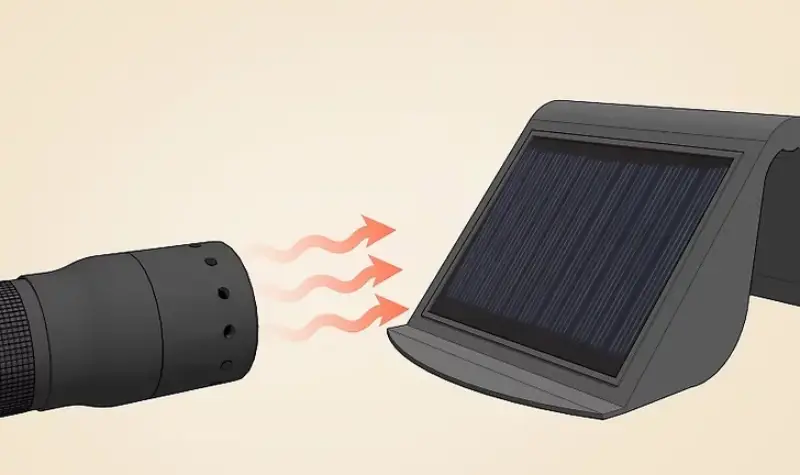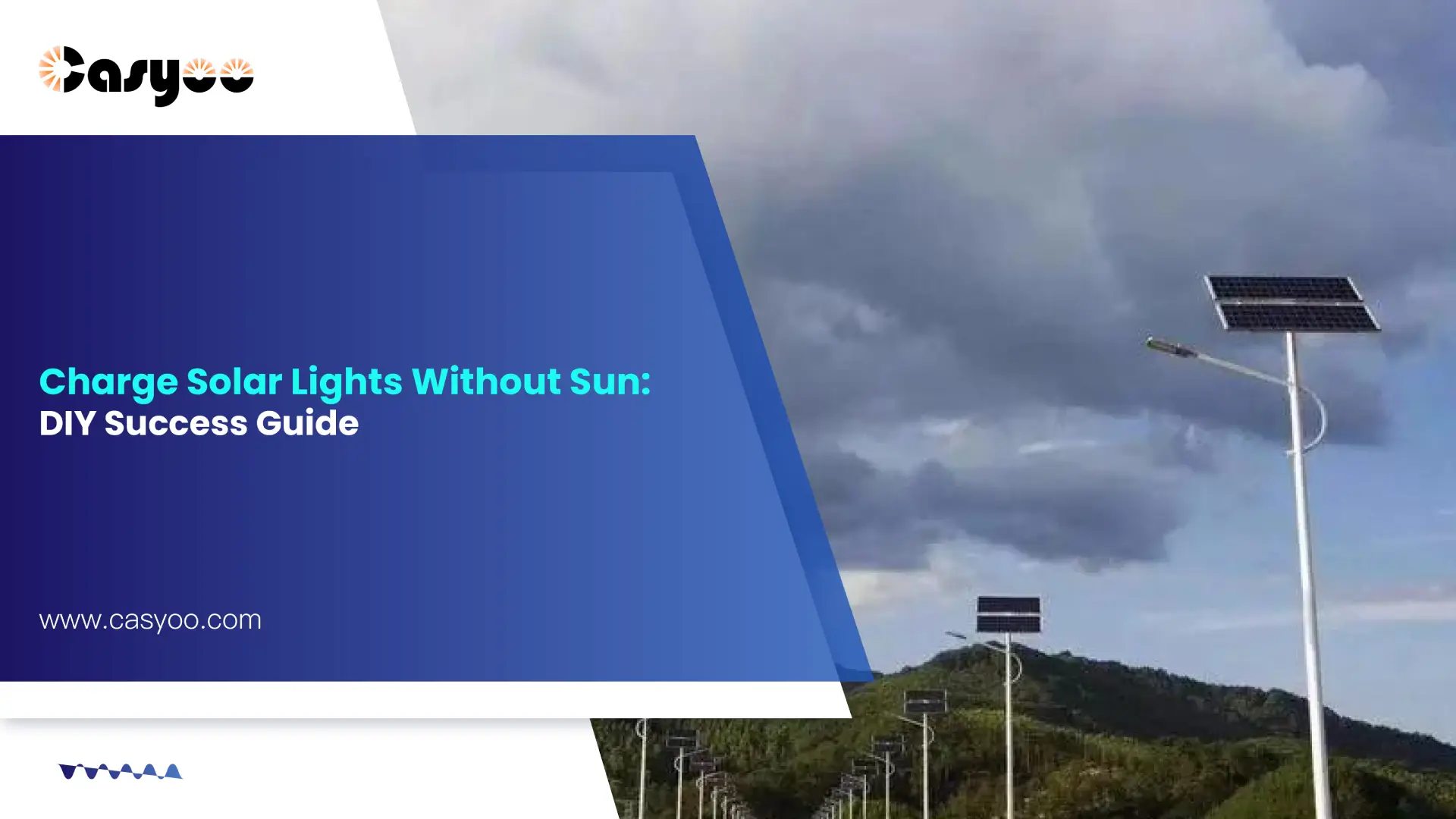Living in a place with minimal sunlight does not preclude you from benefiting from solar illumination. As an LED expert who has spent years perfecting solar charging systems, I’ve learned that solar lights can operate effectively even in the absence of direct sunshine. In reality, some alternative billing techniques are surprisingly effective. Allow me to share my expert ideas to assist you in keeping your solar lights bright regardless of the weather.
Understanding the Science Behind Solar Lights
The Basic Working Principle of Solar Lights
An LED light, a rechargeable battery, and a solar panel are the three main parts of solar lights. When light strikes the solar panel, it initiates an intriguing mechanism that turns light energy to electrical power. The battery then stores this electricity for later use.
The Light-to-Electricity Conversion Process
The magic happens within your solar panel’s photovoltaic cells. Think of these cells as small silicon power plants. When photons (light particles) reach these cells, they excite the electrons in the silicon, resulting in an electric current. It’s comparable to how a row of dominoes falls; one movement sets off a chain reaction.
Why Alternative Light Sources Work
Most individuals don’t aware that solar panels respond to light wavelengths rather than heat. This means that any light source with the appropriate wavelengths can power your solar lights. This idea opens up a wide range of charging options other than direct sunlight.
Effective Alternative Charging Solutions
LED Light Charging Method
Warm white LED lights are the most efficient charging option for solar lights. These LEDs emit light in the 600-700nm wavelength region, which corresponds to the absorption spectra of most solar cells. This scientific alignment explains why LEDs can efficiently charge your solar panels even in the absence of sunshine.
When setting up your LED charging station, timing and placement must be carefully considered. For uniform illumination throughout the surface, position your solar panel exactly in front of the LED light source. While several instructions recommend certain distances, I’ve discovered that the key is to maintain enough distance to avoid heat accumulation while keeping the light bright enough for optimal charging. I’ve noticed that LED charging takes 10-12 hours to fully charge.
When selecting an LED light source, choose warm white LEDs over cold white or colorful LEDs. This is not an accidental decision; warm white LEDs provide the best light spectrum for solar charging. Set up your charging station in a sturdy area that will not be disturbed, as consistent light exposure is required for optimum charging.
Comparing Different Light Sources
While LED lights are ideal for charging solar panels, various artificial light sources can also successfully charge your solar lighting. Fluorescent lights are a potential alternative for charging because their light spectrum lies between 400 and 700nm, making them ideal for solar charging. While they may not be as efficient as LEDs, they are widely available in most interior locations, making them a useful alternative when sunshine is unavailable.
Standard flashlights can also be used to charge solar lights, though this process takes more patience. Position the flashlight near the solar panel and keep it steady. While this is not the most efficient method, it can be beneficial in an emergency where other light sources are unavailable.

Environmental Charging Strategies
Cloudy and Rainy Day Solutions
Contrary to popular opinion, foggy days can still power your solar lights. The dispersed sunlight that passes through clouds retains enough energy to charge your panels, but at a slower rate. Place your panels at a 45-degree angle to maximize the amount of light that is available.
Indoor Charging Techniques
Indoor charging: Place your solar lights near bright light sources or windows. For the best results, set up a separate charging station with LED lighting. Maintain continuous lighting for at least 8-10 hours to guarantee proper charging.
Optimization in different weather
Surprisingly, chilly temperatures can improve your solar lights’ charging performance. This surprising benefit occurs because lower temperatures restrict electron mobility within solar cells, resulting in a bigger voltage difference and improved charging efficiency. To fully benefit from this advantage, regular maintenance and protection are required.
Winter maintenance becomes critical throughout the colder months. Regular inspection and cleaning are required, but you must be cautious while removing snow or ice to avoid injuring the fragile solar panels. To stop moisture intrusion, keep the panel surface clear and all seals in place.
As the seasons change, your solar lights require various care approaches. During the autumn season, boost your cleaning routine to keep falling leaves from obscuring the panels. Winter necessitates careful snow removal and routine inspections for frost damage. Conduct a thorough examination in the spring to find and repair any damage brought on by the severe winter conditions. This seasonal adaption contributes to maximum charging efficiency throughout the year.
Window Charging Tips
Place the panels as close to the glass as you can when charging through windows. To enhance light transmission, clean both the solar panel and the glass on a regular basis. Double-pane windows can reduce efficiency by 10-15%, so modify charging times appropriately.
Charging Efficiency Optimization
Optimal Charging Duration
Different charging methods require different durations:
- Direct sunlight: 4-6 hours
- LED lights: 6-8 hours
- Other artificial lights: 8-12 hours
Deep Charging Process
Deep charging is a useful concept for increasing the longevity of solar lights. Allowing your solar lights to charge constantly for 72 hours resets and optimizes the battery’s charging capacity. Consider giving your solar lights a rejuvenating spa treatment.
Deep charging is most effective when the charging conditions are optimal. Whether you use natural sunshine or LED alternatives, be sure your lights have continuous exposure throughout the procedure. Monitor the charging progress, but do not interrupt the cycle; even partial use during this time can diminish the effectiveness of the deep charge.
While this approach may appear time-consuming, the advantages greatly surpass the brief inconvenience. Deep charging reduces the battery memory effect, enhances overall capacity, and has the potential to quadruple the battery life of your lights. From my experience dealing with various solar lighting systems, conducting regular deep charging cycles has considerably reduced the frequency of battery replacements.
Maintenance Guidelines
Regular maintenance has a considerable impact on charging efficiency. Clean your solar panels once a month using a gentle microfiber cloth and water. Avoid using aggressive cleaning products that can leave residue on the panel surface.
Troubleshooting Common Issues
Charging Failure Analysis
If your solar lights aren’t charging properly, check these common culprits:
- Dirty or obstructed solar panels
- Incorrect panel positioning
- Degraded batteries
- Damaged photovoltaic cells
New Light Issues
For newly installed solar lights, make careful to remove all protective films from the solar panel. Please ensure that the power switch is in the ‘ON’ position and that the battery pull tab is removed.
Charging Status Indicators
Most current solar lights have charge indications. A constant green light usually signifies active charging, whereas a red light may indicate a low battery or charging troubles. For information on individual indicator meanings, consult your product’s documentation.
Conclusion
We looked at how to keep your solar lights running properly even when there is no direct sunshine. From LED charging in the optimal 600-700nm wavelength region to taking advantage of cold weather benefits, these approaches can greatly improve your lighting efficiency. Keep in mind that prolonging the life of your lights requires routine 72-hour deep charging and proper maintenance.
Why deal with charging issues when you can have solar street lighting that just work? Our professional solar lighting systems include these features:
- Rapid charging technique can store enough juice in about 4-6 hours.
- Advanced battery systems ensure stable illumination.
- Weather-resistant design that functions consistently in all conditions.
- Smart charging optimization maximizes every bit of available light.
For a free consultation, get in touch with our technical staff right now!




